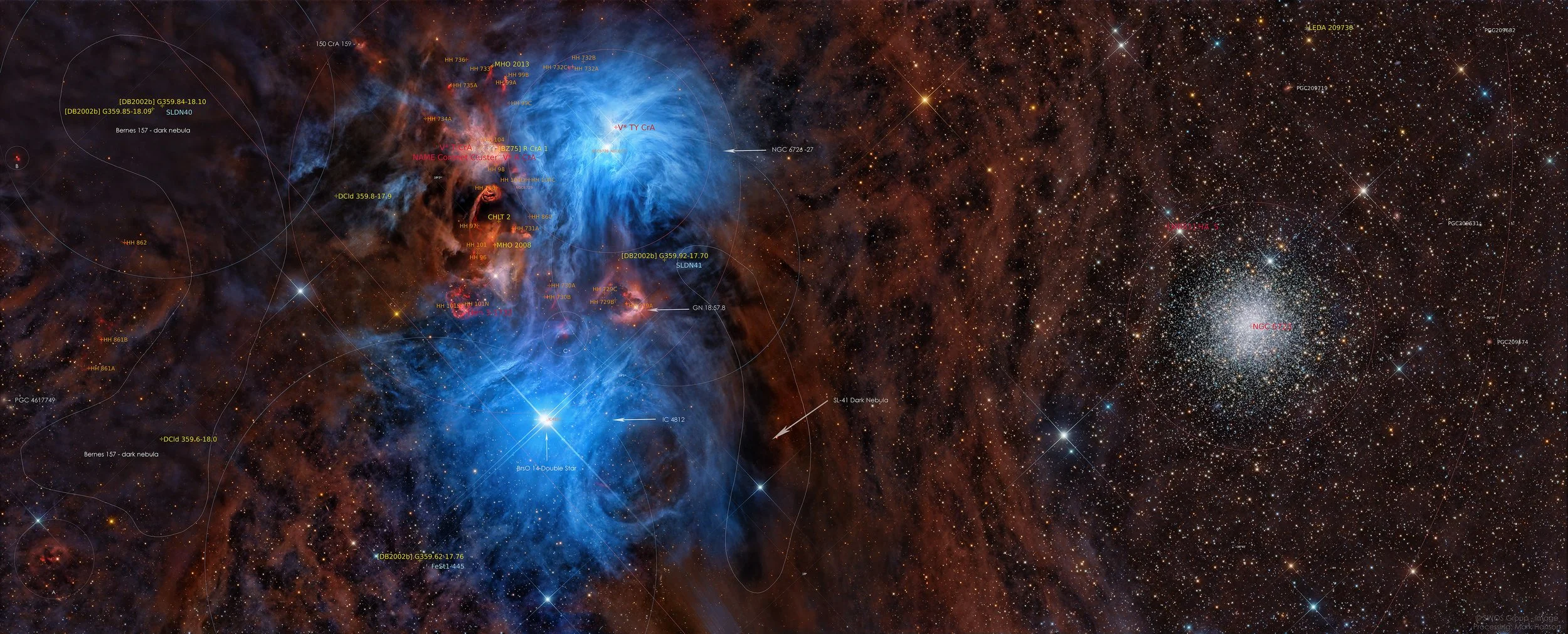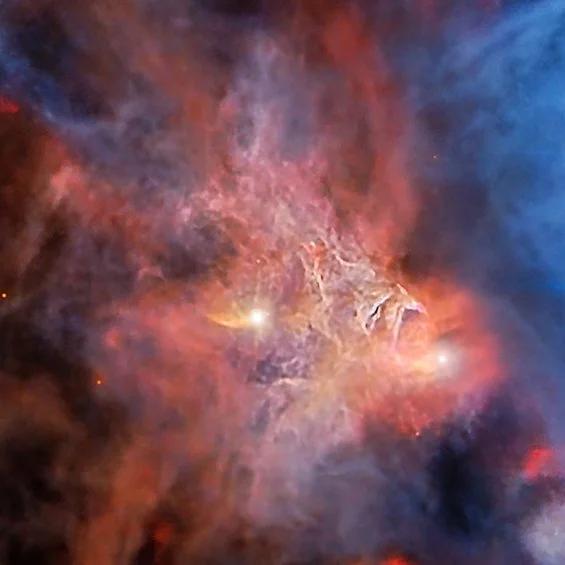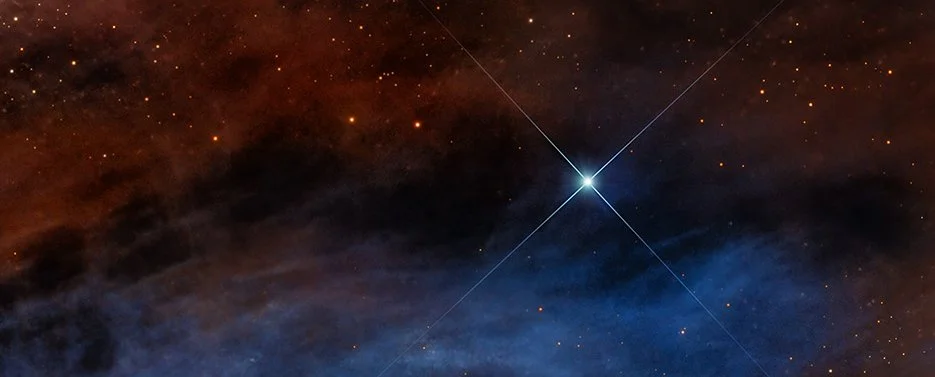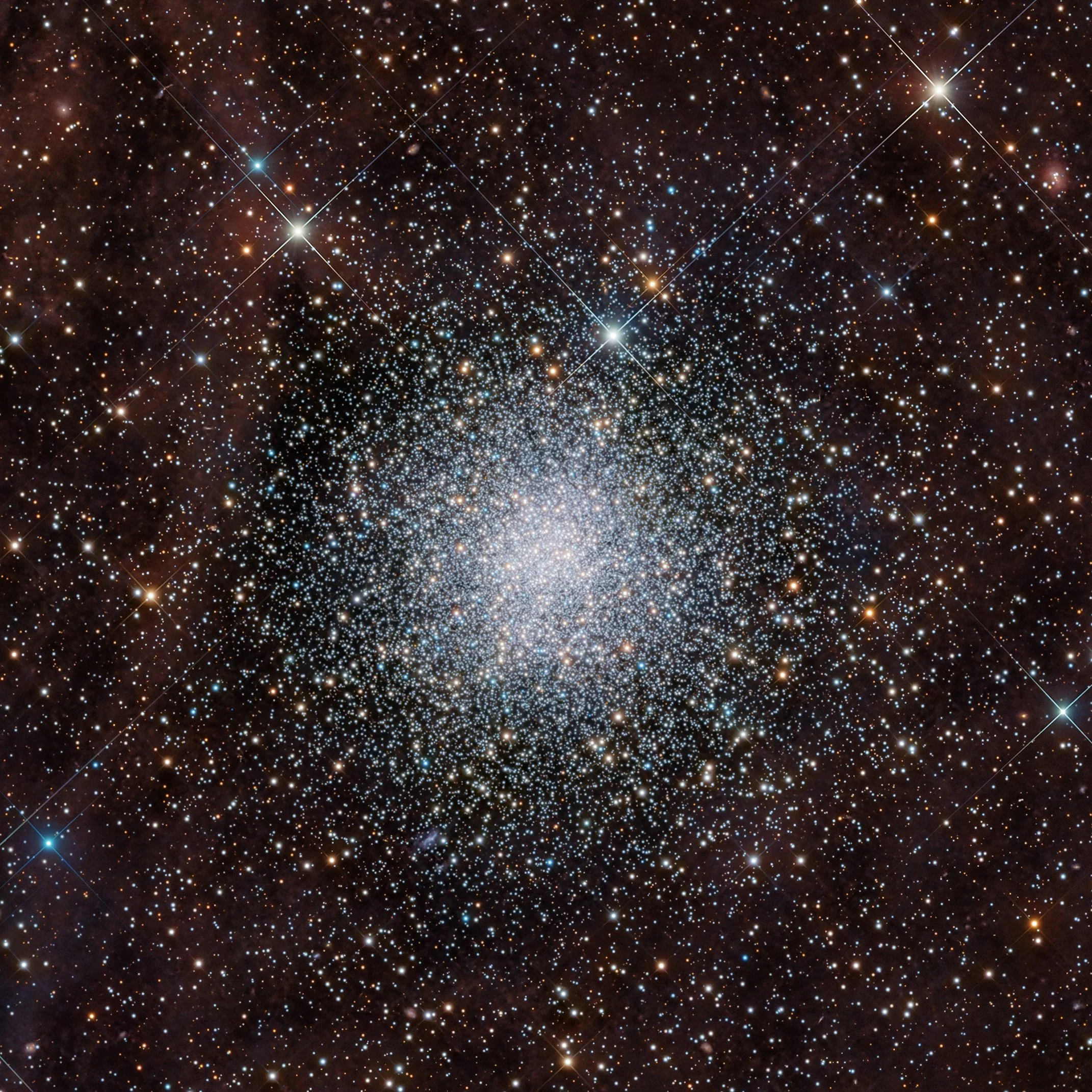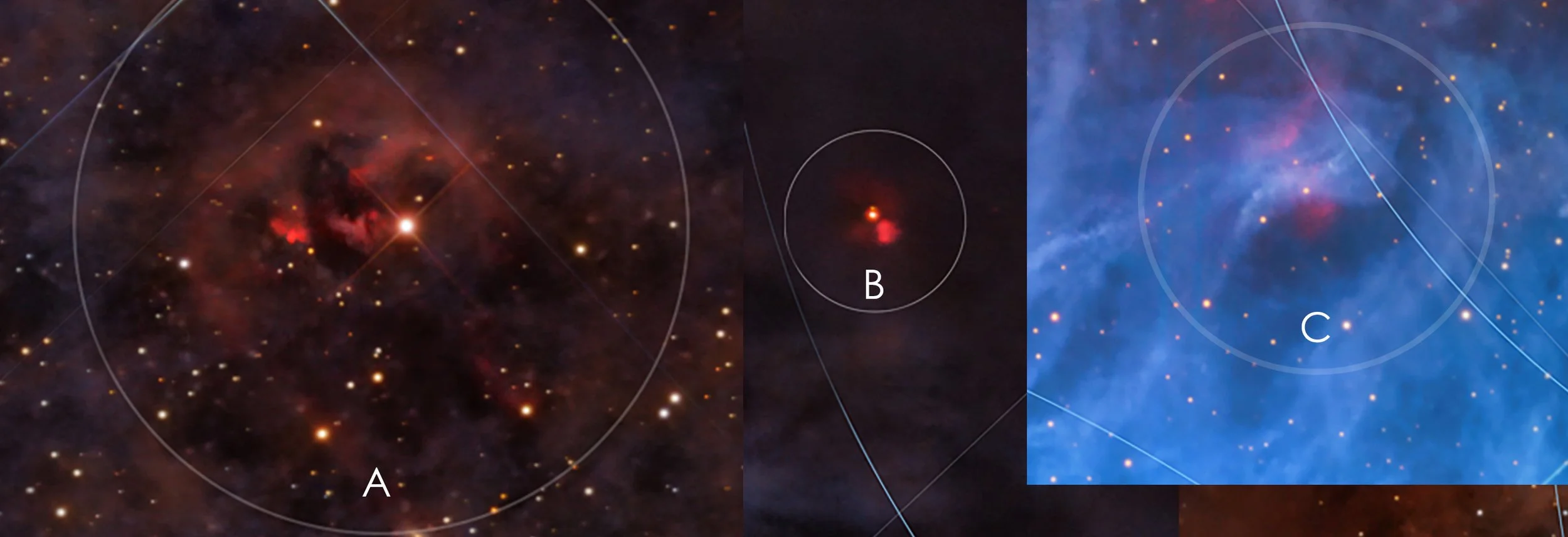Jets and Reflection Nebulae
NGC 6726-27, IC 4812 in Corona Australis &
Globular Cluster NGC 6723 in Sagittarius
This beautiful star forming region in the constellation Corona Australis at the edge of Sagittarius has so much to offer, with its outstanding reflection and emission nebulae, Hirbig-Haro objects, a variable nebulae, dark nebulae, many background galaxies as well as a large globular cluster.
It is quite a dynamic and colorful area in the Southern sky. We have also added a labeled version for you to gaze at.
NGC 2726-27 and IC 4812 - these most prominent intense blue areas (left center) are reflection nebulae which are clouds of interstellar dust lit up by the bright nearby stars. You can also see them illuminating areas quite far outside the actual Nebula’s themselves. NGC 2726-27 has the presence of a widely spaced double star, while IC 4812 features a much closer double star with two sets of diffraction spikes, indicating the presence of double star BrsO 14.
Just to the left of NGC 2726 is a very exciting area, NGC 6729 a reflection/emission nebulae located some 424 light-years away. This object is also a variable nebulae, and the Coronet Cluster also known as R CrA. It was discovered by Johann Friedrich Julius Schmidt in 1861.This fan-shaped nebulae opens from the star R Coronae Australis toward the star T CrA to the south-east. R CrA is a pre-main-sequence star in the Corona Australis molecular complex, one of the closer star-forming regions of the galaxy.
NGC 2726
Bernes 157 and SL 41 are areas called Dark Nebulae interstellar clouds that are dense enough to obscure the light from behind. Bernes 157 (DN) is a boomerang shaped dark nebulae that is 520 light years away.
Dark Nebulae
Herbig-Haro (HH) objects, named after astronomers George Herbig and Guillermo Haro, are high-velocity jets emitted by young stellar objects that interact with surrounding gas, generating shock waves and illuminated arcs. These jets can reach speeds between 100 and 1000 km/s, forming distinct luminous fronts within nebulae that persist for only a few thousand years. This image contains 35 examples of Herbig-Haro objects, HH 82 A-B, 96, 97, 98, 99 A-B-C, 100, 101, 101 S-N, 104, 104 D-C, 729 A-B-C, 730 A-B, 731 A-B, 732 A-B-C, 733, 734 A, 735 A-B, 736, 860, 861 A-B, 862.
These objects are often mislabeled among amateur and even professional data, which makes it challenging to get a good map of them and their true locations, including several that remain unnamed or unclassified in literature.
NGC 6723 (right center) colorful gem like globular cluster really compliments this field of view. This globular cluster cataloged as Dunlop 573, was discovered by James Dunlop in 1826 from New South Wales, Australia. Appearing near Corona Australis in Sagittarius, and it is located about 30,000 light-years away, beyond the Corona Australis dust cloud.
NGC 6723 Globular Cluster
There are quite a few small background galaxies present here as well.
The labeled version shows all these objects and more.
There are 3 areas: A, B and C that will require further study as they are unclassified or unnamed.
A, B and C that will require further study
Taken at El Sauce Chile 24” CDK and Moravian C5
Lum-35x600, RGB-36x300, HA-30x900 each pane
Data by SWSO Imaging team: Mazlin, Parker, Forman, Magill, Hanson
Image Processing: Mark Hanson
Image Labels: Alex Zaytsev and Mark Hanson
Enjoy,
Alex and Mark

